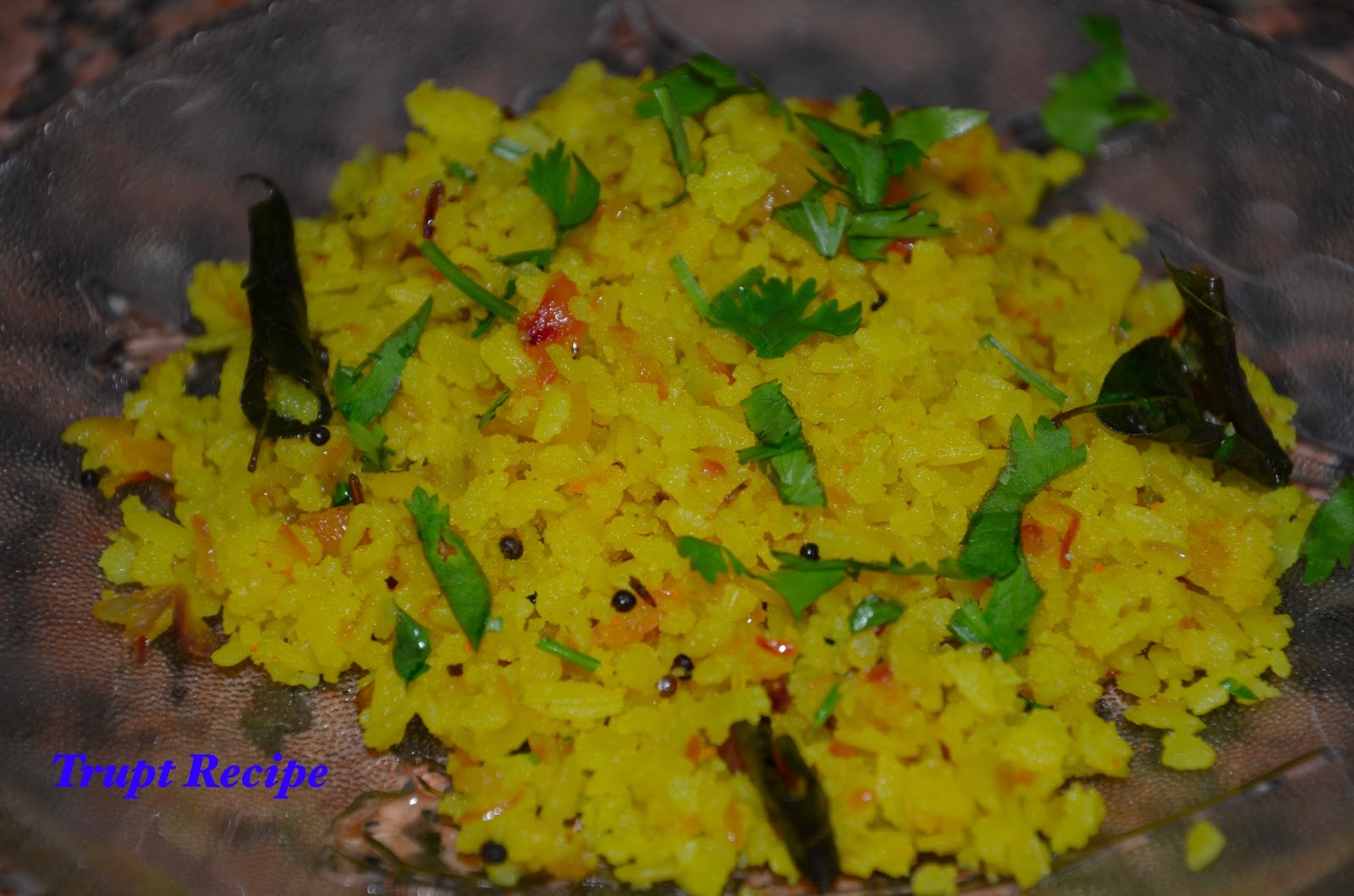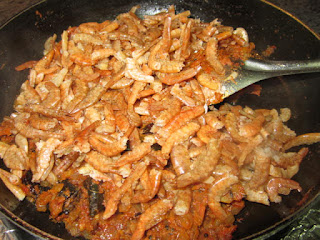Kanda Pohe, Kanda Poha
Poha also known as flattened rice or beaten rice is a dehusked rice which is flattened into flat light dry flakes. These flakes of rice swell when added to liquid, whether hot or cold, as they absorb water, milk or any other liquids. The thicknesses of these flakes vary between almost translucently thin to nearly four times thicker than a normal rice grain. This is easily digestible form of raw rice and is very popular across India, Nepal and Bangladesh, and is normally used to prepare snacks and easy fast food in a variety of Indian cuisine styles, some even for long-term consumption.
It is known by a variety of names: Atukulu in Telugu, Aval in Tamil and Malayalam, Chindé in Bengali and parts of Bihar and Jharkhand, Chira in Assamese, Chudaa in Oriya, Chiura in Nepali, Bhojpuri and Chhattisgarhi, Poha or Pauwa in Hindi, Baji in Newari, Pohe in Marathi, Poha in Konkani, Avalakki in Kannada, and Pauaa/Paunva in Gujarati.
Flattened rice can be eaten raw by immersing it in plain water or milk, with salt and sugar to taste, or lightly fried in oil with nuts, raisins, cardamoms, and other spices. It can be reconstituted with hot water to make a porridge or paste, depending on the proportion of water added. In villages, particularly in Chhattisgarh, flattened rice is also eaten raw by mixing with jaggery.
So today we are cooking poha with lightly frying mustard seeds, turmeric, chili powder, finely chopped onions and then moistened poha is added to the spicy mix and steamed for a few minutes.
Flattened rice is in a way, a convenience food and very similar to bread in usage.
Kanda Pohe
Ingredients:
2 cups of beaten rice flakes (jhada or thick variety of Poha)
1 medium sized onion finely chopped
2 medium sized green chillies chopped roughly
2 tblspn Oil
1/2 tspn Mustard seeds (Rai)
1/2 tspn Cumin seeds (Jeera)
1/2 tspn Turmeric powder
8-10 Curry leaves ( Kadi patta)
1tspn Sugar
2 tblspn lemon juice
Salt to taste
Optional:
1 medium sized boiled & diced potato
1tblspn roasted peanuts
Garnishing:
Freshly chopped Coriander leaves
Freshly grated coconut
Method:
- Clean, wash and rinse the rice flakes lightly in water for atleast 2 to 3 times. Drain the excess water and keep aside.
- Heat oil in a kadhai. Add the mustard seeds, cumin seeds and curry leaves.
- When the seeds start crackling, add onions and green chillies, mix well and sauté on a medium flame till the onions turn translucent in color.
- Add the turmeric powder, sugar and lemon juice, mix well.
- Now its time to add rice flakes and salt. Stir it lightly until everything is mixed well and cook on a slow flame for another 2 minutes. Sprinkle with freshly chopped coriander leaves. Its ready to serve. :-)
- Serve it immediately in a plate with fresh coriander and coconut.
NOTE:
- If you like it to be more spicy, add 2 more small green chillies.
- Its optional to add diced potatoes and roasted peanuts in this recipe. As Im allergic to peanuts I have not added them in the recipe. You can add potato and peanuts once onions become translucent in colour and follow the rest of the recipe same way as its mentioned above.

































